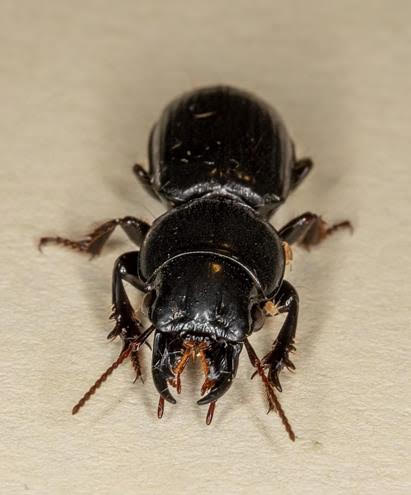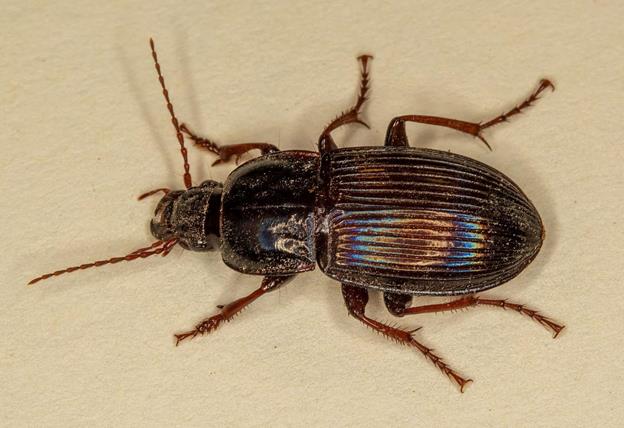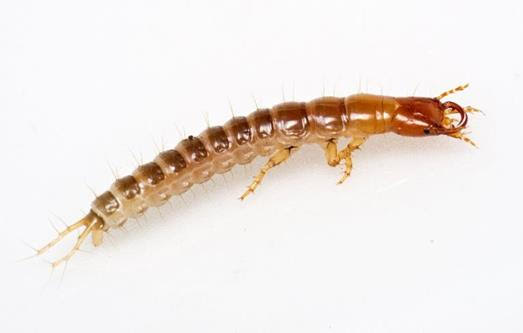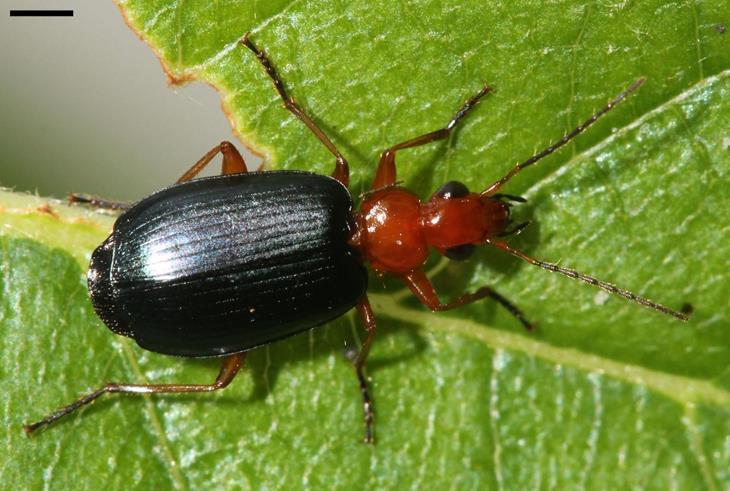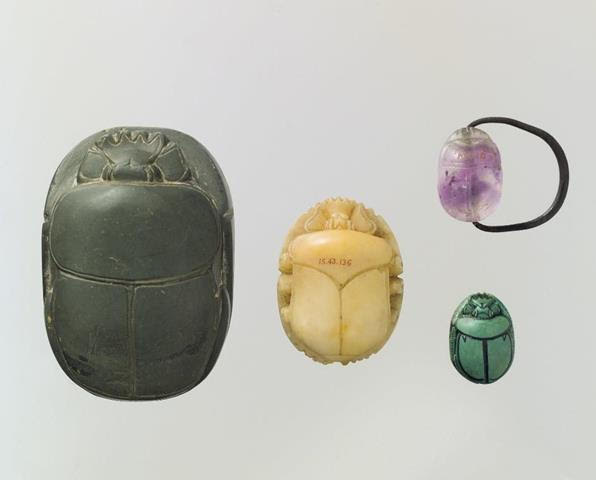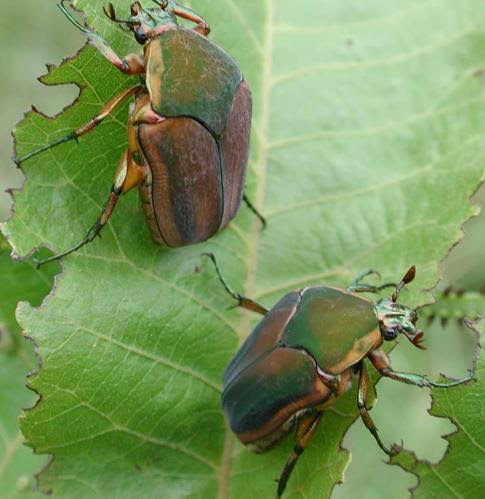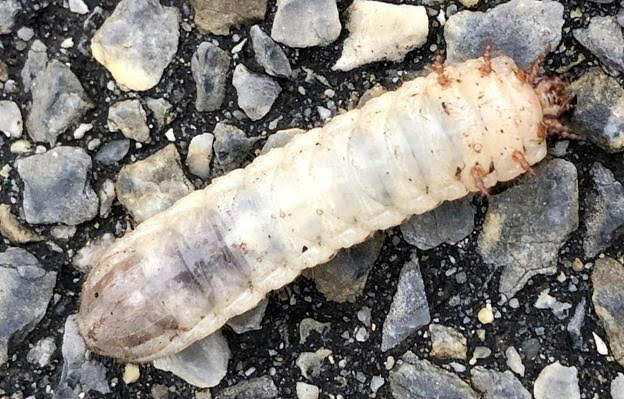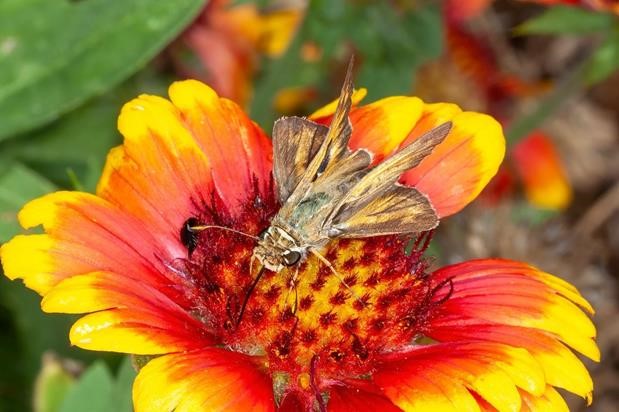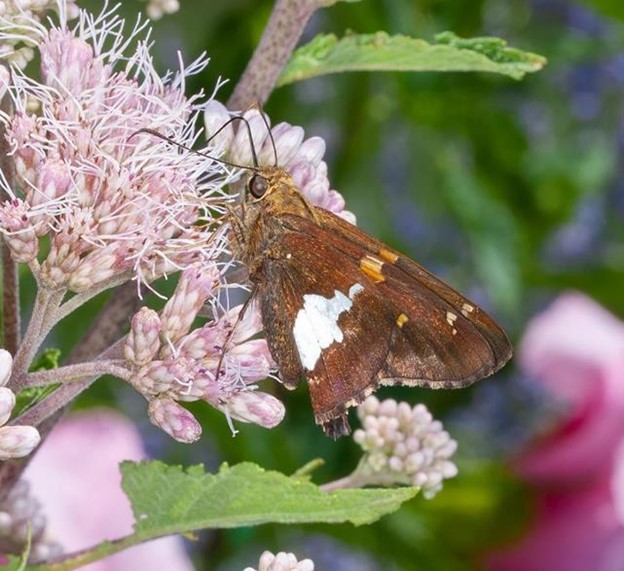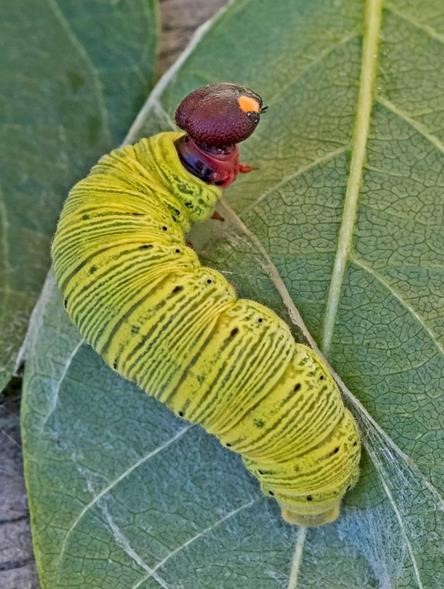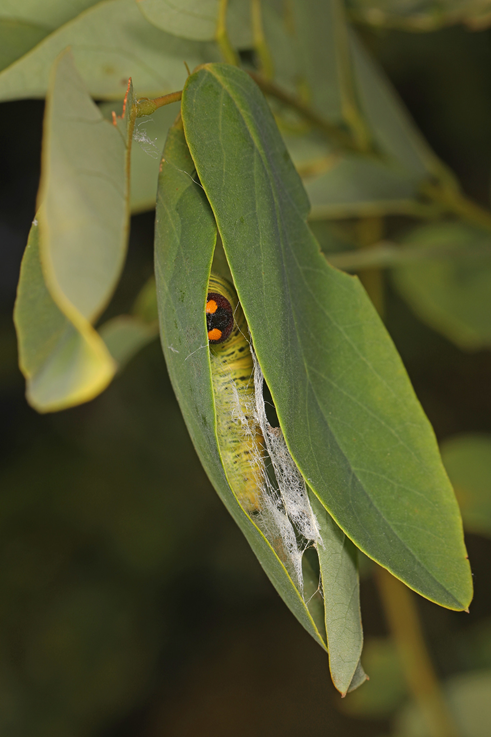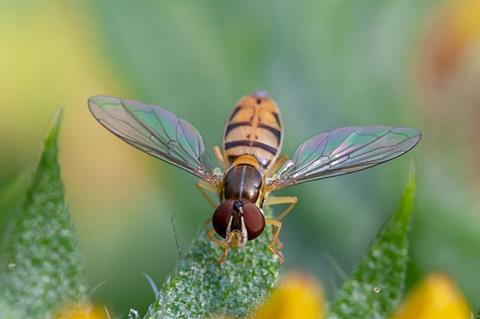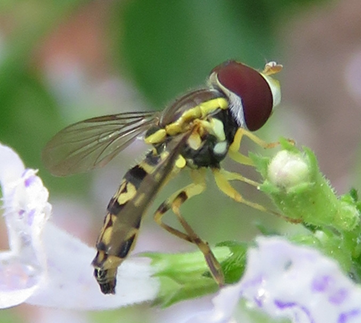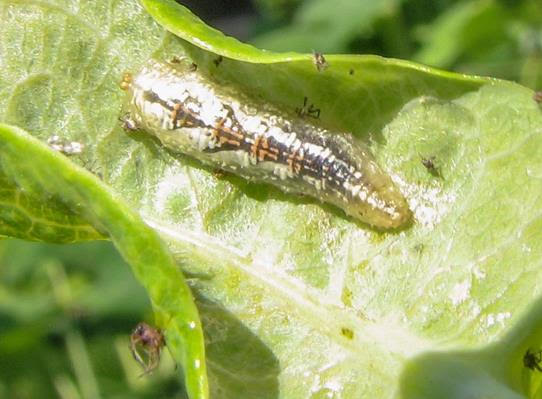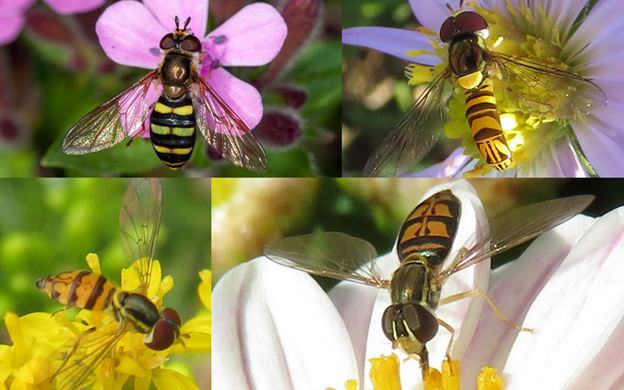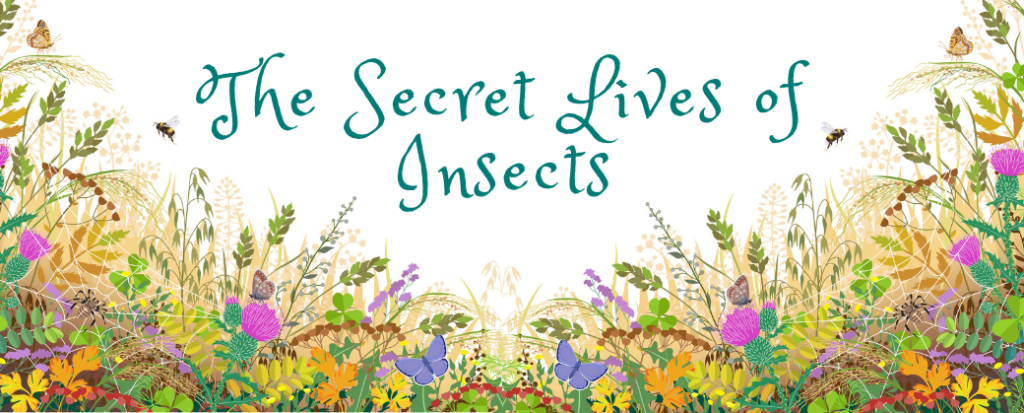
Dragonflies: Jewels of the Insect World
By Judy Ferris, Master Naturalist & Guest Blogger
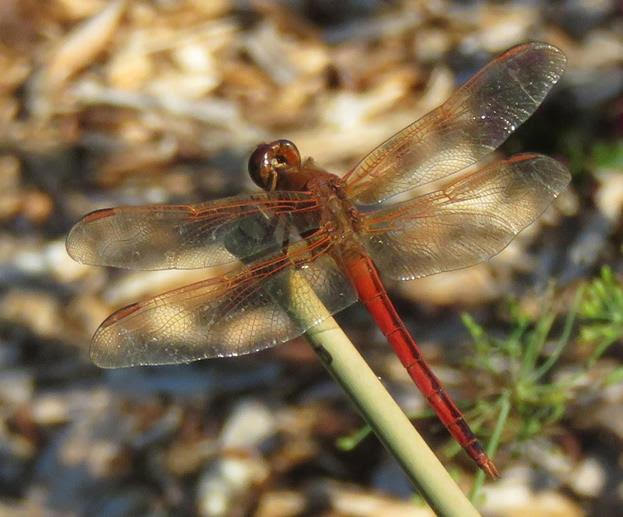
While brightly colored insects are noticed and admired, Dragonflies are the true jewels of the insect world. Their wings shimmer in a glittering array of patterns. Their huge eyes glow like gems and their bodies are colorfully painted. Add to this their extraordinary flight capabilities and clearly, this is no ordinary creature!
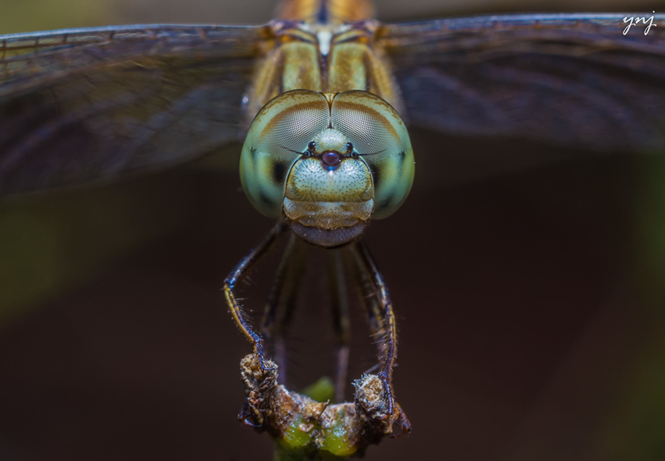
To scrutinize a Dragonfly is to peer into the past. Starting with the head, we note that unlike nearly all insects today, dragonflies have minimal antennae. Their vision, however, is acute. Massive compound eyes encompass nearly their entire head. Each eye has about 30,000 facets; receptors which bring visual information to the dragonfly’s brain. (Olberg 2009) Additional adaptations ensure that their color vision is probably better than ours! (Ryo Futahashi et. al 2014) How generous of Mother Nature to endow a 320 million-year old species with vision that modern insects, and even humans, would envy. Ever had trouble sneaking up on a dragonfly? Now you know why! 60,000 eye facets are monitoring your every move!
But nature’s gifts don’t stop at the dragonfly’s head. Its legs are one of the secrets of its success. A dragonfly’s thorax is specially modified to accommodate all of its legs up front. Pushing the legs forward in this way essentially makes the dragonfly into a flying basket for scooping up food. Spiny legs ensure that no insect escapes capture. The dragonfly then, snags prey on the wing, uses its mouth to rip off the wings so that the captive can’t escape, and feasts on its victim without ever having to land. What does a dragonfly eat? Glad you asked! Dragonflies are exclusively carnivores. Mosquitoes and midges are dietary staples, but anything that can be captured in the air, including Deer Flies, Butterflies, and other dragonflies, is fair game.
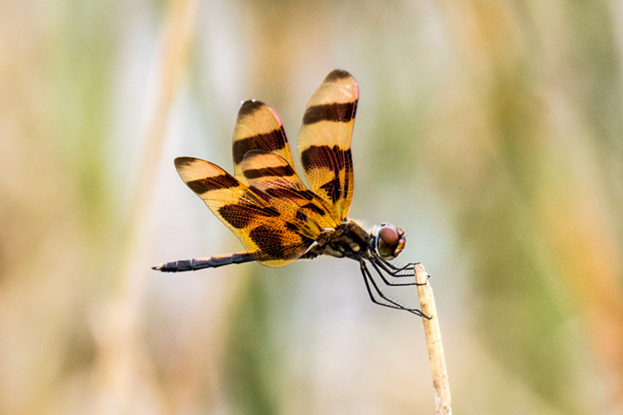
Watch this 1-minute video of a dragonfly eating a mosquito. Note the positioning of the dragonfly‘s legs; basket-like and perfect for capturing prey.
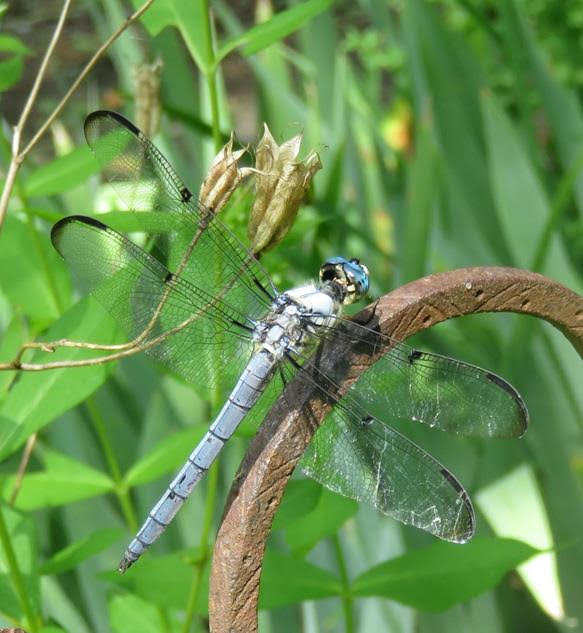
Folks who study insects consider dragonflies to be ‘primitive winged’ because unlike modern insects, dragonflies are unable to fold their wings when not in use. Their wings are forever held out at a 90-degree angle to the body. Ah, but this is not just any old set of wings! The front and rear wings of a dragonfly are able to act independently from one another. This unique wing configuration is the reason that dragonflies are Masters Of The Air. They can hover like helicopters, turn on a dime, and dart swiftly from a standing start. Today’s modern insects flap their wings at a speed of about 1000 flaps per minute. Dragonflies? Hardly raise a sweat; flapping only 30 flaps per minute. These amazing flight capabilities are yet another source of envy for today’s insects! Perhaps primitive’ is not so bad after all!
Click below to watch a beautiful slow-motion video by BBC of a dragonfly in flight. 1 ½ minutes in length.
Dragonflies are superb hunters. But mighty though they may be, after hundreds of millions of years, they still remain tied to the water. Dragonfly nymphs (larvae) develop in water for months and sometimes years before becoming adults. You might expect dragonfly babies to be elegant and artistic. But NO! Dragonfly nymphs are the stuff of horror movies! Imagine a small (1/4 to 1 ½ inches long), crayfish-like creature with a large head containing a lethal lower lip (labium). The nymph’s lower lip is hinged, rather like bending your arm and tucking it in to your chest. The lip can shoot out, snag prey, and drag it back into the mouth so fast that if you blink, you’ll miss it!
To check this out for yourself, watch this excellent 3-minute video from PBS ‘Curiosity Stream’ on dragonfly adults and nymphs.
Dragonfly nymphs eat the larvae of mosquitoes and mayflies, as well as tadpoles, and even small minnows. The nymphs themselves, of course, are a favorite food of frogs, fish, and snakes. It is estimated that the mortality rate of dragonfly nymphs may be as high as 99%! (Arnett 2000). Thus, no matter how lethal your lip is, if you are a nymph, it pays to have a good escape strategy. Mother Nature had to work hard on this one but as always, came up with a novel solution.
-
- A dragonfly nymph has gills in its rectum. Thus, the nymph continually takes water in and out through its anus to breathe. [No. I am not making this up!]
- If threatened, the nymph uses the powerful muscles of its rectum to blast water out of the anus.
- Whoosh! Powered by the blast, the nymph is jet-propelled at high speed away from danger, leaving only a camouflaging plume of disturbed debris in its wake!
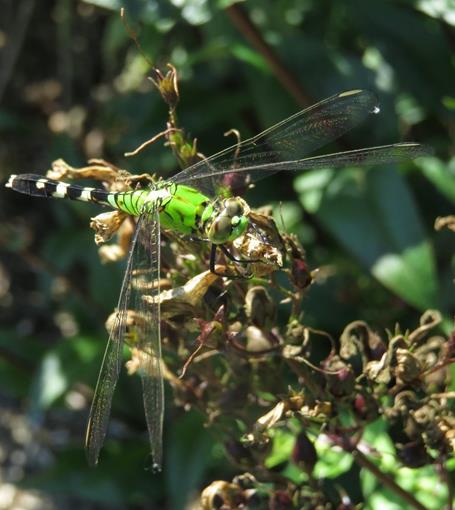
Dragonflies were perfect when they were created 320 million years ago and remain so to this day. In both the larval and adult stage they are master predators; helping keep mosquitoes, flies, and other pests in check. They also serve as an important food source for other creatures. Dragonflies are good indicators of a healthy environment and clean water. How wondrous that these jewel-like super-predators, capable of astonishing aerobatic and aquatic feats, still share our world and bedazzle us today.
It ‘s easy to be smitten by these astonishing insects! If you would like to learn how to attract dragonflies to your yard, check out the link below.
Tree hugger; “How to Create a Dragonfly Garden”
